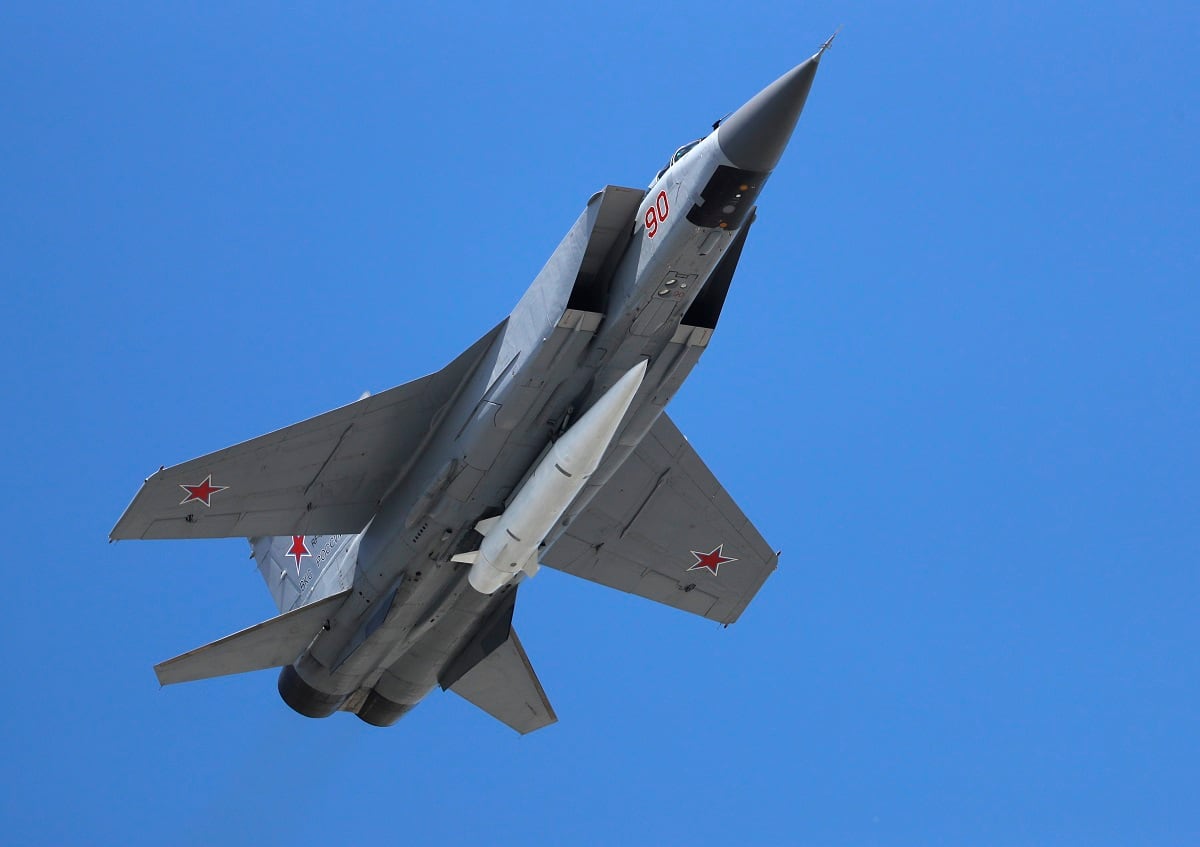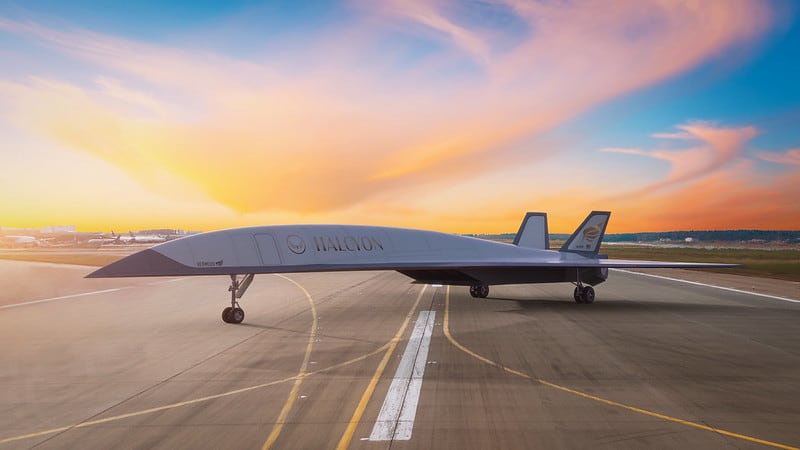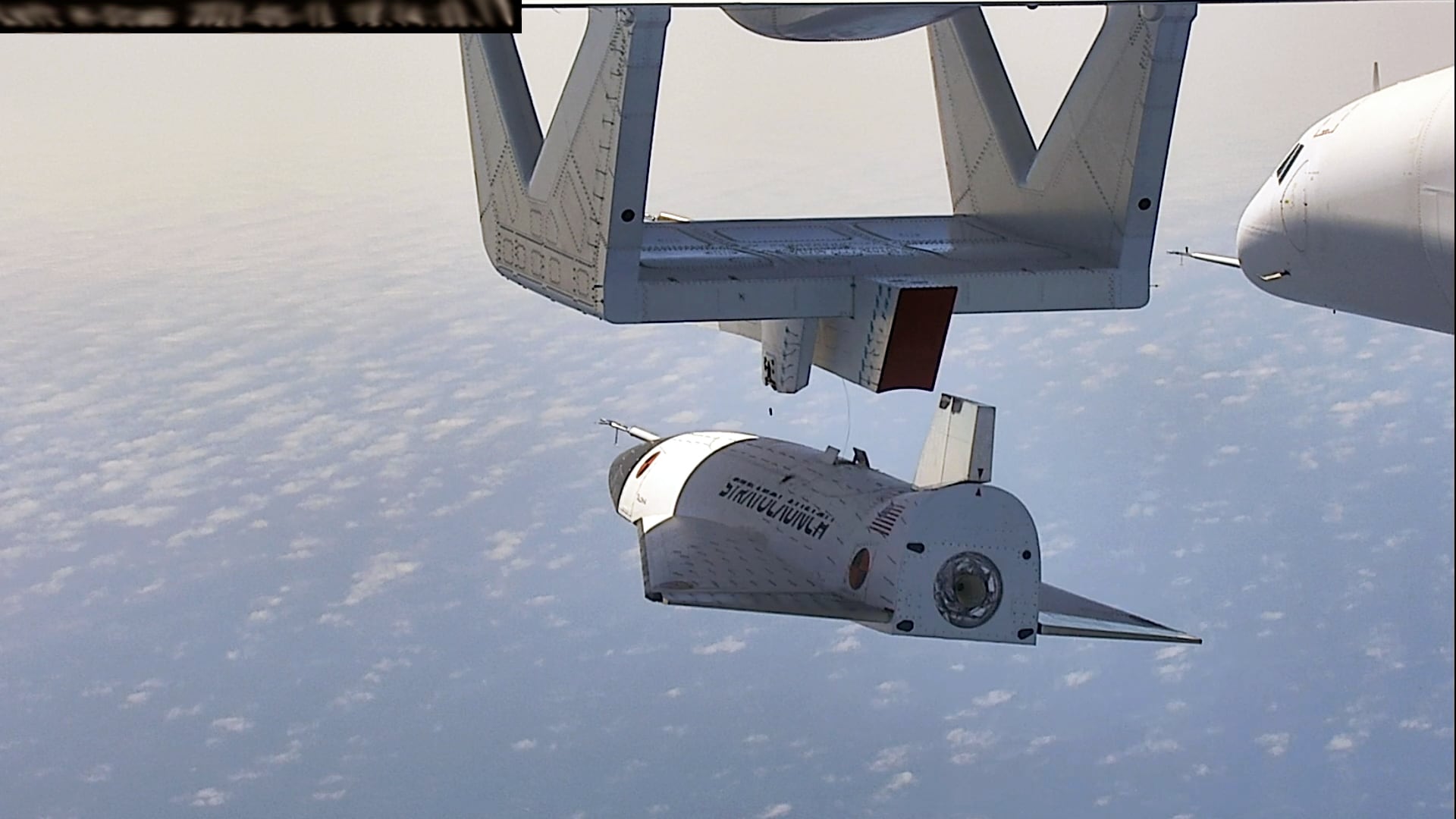WASHINGTON — When Joe Laurienti founded space propulsion company Ursa Major in 2015, he didn’t expect its first contract would come from a Pentagon hypersonics program.
It was a pivotal year for the commercial space industry as private funders flocked to space startups in record numbers. At the same time, Congress was pushing the Defense Department to eliminate its dependence on Russian-made rocket engines and invest in domestically produced space launch systems.
In that intersection of commercial investment and national security need, Laurienti saw an opportunity. The aerospace engineer, who had worked on propulsion systems for SpaceX and Blue Origin, decided to start a company focused on building engines for space launch vehicles using advanced manufacturing techniques.
But Ursa Major’s first deal wasn’t for a space launcher.
The 2017 contract from the Air Force Research Laboratory was to supply the company’s Hadley liquid rocket engine for the lab’s X-60A, a hypersonic test vehicle. It turns out the same liquid propulsion systems that provide maneuverability and deep throttle capabilities for rockets are also useful for hypersonic aerial targeting and flight testing.
The contract, Laurienti said, broadened his vision for Ursa Major.
“Hypersonics fell in our lap,” he told C4ISRNET in an interview. “That, pretty early on, forced us to architect a very dual-use, single engine that could work for space or hypersonics.”
Click here to see the Top 100, a ranking of the largest defense companies in the world.
Ursa Major’s expertise remains in rocket propulsion, but it is now developing a portfolio of engines that can be used for Defense Department and commercial missions, as well as support a range of air-launched, space and hypersonic applications. In May, the Air Force lab awarded the company a contract to continue developing and testing two of its engines — Arroway for space and Draper for hypersonic launches.
While Ursa Major’s pathway into the DoD hypersonics market isn’t typical, it’s one of many commercial and nontraditional companies looking to make inroads in a field dominated by defense contractors such as Lockheed Martin, Northrop Grumman and RTX (formerly known as Raytheon Technologies).
What they may lack in experience with major defense programs, these startups make up for with specialized expertise, private capital, and novel approaches to developing and producing hardware and software. Some, like Ursa Major, offer flexible, dual-use subsystems and components that could be integrated into the Defense Department’s hypersonic efforts, which are largely focused on developing and testing high-speed weapons and defending against similar systems that adversaries, including China and Russia, are building.

Others are stepping into new territory, developing hypersonic aircraft that could one day pave the way for high-speed military and commercial transport.
As the Pentagon looks to begin fielding hypersonic weapons in the next few years and eyes a future that could include aircraft traveling and maneuvering at Mach 5 or higher speeds, investing in these companies could help ensure the department has a strong, diverse industrial base on which it can rely.
“Our voice in the DoD lately has been: How do you use what we have built — if not the end product, all of the underlying technology and capability set — for adjacent markets?” Laurienti said. “I think the DoD [is] going a layer deeper on the capabilities of these companies, and where they can pull those threads will be really important over the next few years.”
Attracting private investment
Venture capitalists invested at least $356 million last year in U.S.-based startups developing hypersonic systems and technology, according to analytics firm PitchBook. However, that figure — up from $78 million in 2020 and $111 million in 2021 — is likely even higher due to unannounced funding.
Drawing private funding is crucial for any startup, but particularly for those developing breakthrough capabilities in areas like hypersonics, where extreme heat and complex aerodynamics present significant technological challenges. To attract the early capital needed to build systems that operate in that environment, demonstrating demand is important.
While most companies developing hypersonic aircraft or supporting technology have long-term commercial ambitions, that market doesn’t yet exist. For those firms, the Defense Department’s interest in hypersonics and its urgency to begin fielding weapons make it a natural first customer, according to Zach Shore, vice president of growth at startup Hermeus.
DoD partnerships have been important for the Georgia-based company, helping generate interest from investors and providing access to test facilities.
Founded in 2018, Hermeus secured a $1.5 million contract in 2020 from AFWERX, the Air Force’s innovation arm, and a $60 million follow-on deal in 2021 to complete development of its reusable hypersonic aircraft, dubbed Quarterhorse.
The company will use the vehicle to validate its Chimera turbine-based combined cycle engine, which is built on General Electric’s J85 turbojet system, which powers the Air Force’s T-38 jet trainer.
In 2019, Hermeus raised $100 million in private capital to complete Quarterhorse development and fund work on a second vehicle — an uncrewed hypersonic aircraft called Darkhorse. Both efforts will inform work on Halcyon, the company’s commercial passenger aircraft.
“You have to have an intermediary market where you can create revenue and validate the tech,” Shore told C4ISRNET. “The Defense Department does that. It’s that step in between.”

Zachary Krevor, CEO at California-based Stratolaunch, said the company’s work with the DoD has helped show investors that there’s demand for hypersonic systems.
“It gives you a lot more credibility as you walk into that investor world,” he said. “There’s a real demand, and it’s demonstrated by the contract signing.”
Will Roper, a former Air Force acquisition executive who now sits on the boards of Ursa Major and Hermeus, said the success of these companies also has implications for the Pentagon. A robust commercial hypersonics market, he explained, could help make future defense development and production more affordable.
“If it [the Defense Department] gets this wrong, there’s no guarantee there’s going to be another wave of deep tech companies that are focused on defense,” Roper told C4ISRNET in an interview.
Defense opportunities
The Pentagon has shown signs it recognizes the value of partnering with companies whose capabilities could help with near-term needs like testing, materials and subsystem technology.
The department’s tech accelerator, the Defense Innovation Unit, is working to leverage commercial aircraft, payloads and supporting technology to provide more avenues for the DoD to test high-speed systems. Through its HyCAT effort — which stands for hypersonic and high-cadence airborne testing capabilities — DIU has awarded contracts to Rocket Lab and Fenix Space to provide launch capabilities, and to Australia-based Hypersonix to provide a test vehicle.
During the second phase of the HyCAT program, DIU plans to choose payloads and other technology to integrate onto the test vehicles, including alternative navigation, advanced communication systems and low-cost materials.
Lt. Col. Nicholas Estep, DIU’s program manager for HyCAT, said one of the program’s goals is to help the department expand the national security-industrial base for hypersonics by involving commercial companies.
“These are vendors that are not the go-to partners that have been doing hypersonic weapons testing in the past,” he told C4ISRNET in an interview. “We’re fostering the innovation base.”
The Pentagon’s Test Resource Management Center and the Navy are leading a program called the Multi-Service Advanced Capability Hypersonic Test Bed, or MACH-TB, in which they’re working with traditional and nontraditional companies to demonstrate and validate hypersonic technologies.
Stratolaunch, which was founded in 2011, is one of the companies working with the Pentagon on MACH-TB. Its Talon-A test bed — slated to take its first hypersonic flight this fall — is designed to provide a reusable, affordable system for government and commercial customers to test and validate high-speed components and other technologies.
Leveraging commercially available tech for hypersonic applications, Krevor said, is an idea he’s seen the “DoD really starting to explore.”

“If we can start to move technologies that are working in other flight environments or other environments in general and move them into the hypersonic environment, we can really start to short-circuit the typical development timelines for a hypersonic system,” he added.
Indeed, that pull from the Defense Department is starting to happen, albeit at a small scale. Take Varda Space Industries, a California-based in-space manufacturing company founded in 2020: The firm plans to launch small satellites, which it calls “production facilities,” that are able to build components in orbit and return them to Earth in a capsule.
Through a strategic funding increase agreement issued last January, the Air Force, NASA and several private investors awarded Varda $60 million to study whether the capsules it will use to return products to Earth could also serve as a test platform for hypersonic materials and components.
Bryan Clark, a senior fellow at the Hudson Institute, said Varda’s story highlights not only the potential that lies within innovative companies, but the flexibility of these organizations and their interest in adapting to the needs of unlikely customers.
“That’s an example of how the commercial world, which was moving in one direction, has been able to be repurposed towards DoD efforts in hypersonics,” Clark told C4ISRNET.
The long play
Despite the smaller investments in companies like Varda and programs like MACH-TB and HyCAT, the Defense Department’s broader vision for bringing commercial capabilities into its hypersonics programs is unclear.
James Weber, who is responsible for the Pentagon’s high-level approach to developing, fielding and integrating high-speed systems across the military services, declined an interview with C4ISRNET, and a spokesman refused to answer questions about the DoD’s engagement with commercial firms.
But Clark noted that many of the department’s acquisition approaches still favor larger defense primes, and that its requirements process, which he called “specialized and aspirational,” tends to emphasize high-end needs for capabilities that can take decades to materialize — a paradigm that doesn’t always work for nontraditional companies.
“The commercial world is not interested in a 20- or 10-year [research and development] program. They would rather figure out ways to adapt technologies they are already developing to be applied to military use cases,” Clark said. “That, to me, is the big issue. DoD needs to be able to have a more evolutionary approach to requirements development so that it’s able to tap into commercial capacity as opposed to getting exactly what it wants at the start.”
Roper, who also sits on the Pentagon’s Defense Innovation Board, noted that while the department has shown interest in working with nontraditional companies, it hasn’t backed up its rhetoric with funding.
“There are steps in the right direction; they’re just not big in value,” he said. “If the department cares about hypersonics — and it certainly talks [like] it does — then it needs to place a bet on it with the startups that are working in it.”
Roper has for years encouraged the department to work more closely with startups. With hypersonics, he said, there’s an opportunity for a “long play” approach from the DoD that moves beyond small efforts to integrate commercial capabilities within existing programs. With an eye toward future needs, the Pentagon should provide more testing and prototyping venues for “deep tech” companies looking to validate hypersonic aircraft and supporting technology, he argued.
“This, to me, is a must-succeed mission if the industrial base is going to grow,” Roper said in an interview. “The companies that are working in areas like hypersonics, aside from pulling together great teams, they’re also convincing private investors that there is a successful company that can de-risk these initially military technologies for eventual commercial use.”
Roper has experience here. During his time with the Air Force from 2018 to 2021, he championed a program called Agility Prime, which aimed to bring credibility to the fledgling electric aircraft market by creating test and certification opportunities for emerging companies.
The Agility Prime model could translate to the world of hypersonics, he said. And by providing startups with valuable test and validation data, as well as a path toward airworthiness certification, the DoD gets a chance to reduce technical risk and support a burgeoning industrial base it will likely rely upon, he explained.
“It’s also a nice synergy because it teaches the Pentagon that its value in this market is not just money,” Roper added. “It’s much more heavily weighted toward initial testing and certification.”

As the department seeks to work more with new entrants to the defense market, Hermeus’ Shore said it’s important that engagement moves beyond meetings and small contracts to recognizing and valuing innovation and integrating it at scale. It may also mean changing processes to make it easier for startups to compete with more traditional defense contractors.
“There’s just this inherent tension in the department, still, of push versus pull in the way the department buys technology, the way the department originates an idea and the way the department thinks about competition,” he said. “I don’t think the department has yet figured out how to commit to actually bear-hugging new technology sets and working with them.”
Ursa Major’s Laurienti noted that while it’s easier for the Defense Department to leverage commercial capabilities in space, where there’s an existing market, doing that within the hypersonics portfolio requires some creative thinking on the government’s part.
“Just getting DoD to wrap their heads around — ‘This company has X, Y and Z capabilities. Let’s pull that thread a little bit’ — that’ll be game-changing for how the department develops new capabilities very quickly,” he said.
Courtney Albon is C4ISRNET’s space and emerging technology reporter. She has covered the U.S. military since 2012, with a focus on the Air Force and Space Force. She has reported on some of the Defense Department’s most significant acquisition, budget and policy challenges.





